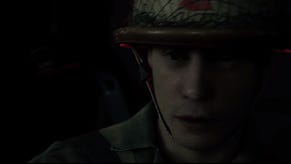The Devil in Me game director on creating impactful horror, serial killers, and The Dark Pictures Anthology
We sat down with The Devil in Me's game director, Tom Heaton, to discuss the latest addition to The Dark Pictures Anthology.
When a group of keen filmmakers is adamant on securing the second season of their true-crime show, the finale of their first season needs to go out with a bang. The issue, however, is that they’re creatively bankrupt, until a mysterious architect approaches them with an irresistible offer. The Devil in Me, releasing this autumn from Supermassive Games, follows the crew as they investigate the crimes of notorious serial killer, H. H. Holmes, over a century later.
The Devil in Me takes you to a brand-new location with an all-new cast, then takes inspiration from of the most infamous serial killers of all time, and introduces new gameplay mechanics to boot. It seems that any fan of Dark Pictures or even true crime is undoubtedly going to enjoy the game, but we sat down with The Devil in Me’s game director, Tom Heaton, to ask exactly what he thinks we should all be looking forward to and why.
First, can you tell us what you’re most excited about players experiencing in The Devil in Me compared to what else they’ve seen in The Dark Pictures Anthology?
One of the things about The Dark Pictures Anthology and narrative-heavy games in general is that it’s the whole package that’s important. I’m most excited about seeing people play it for the first time; that’s always very special, as it’s when you don’t know much about the plot or the characters or the events.
We think the narrative is very strong, and the characters are great. This team of filmmakers have internal rivalry, but also their support networks. They’re people that work together all the time put into this situation of going to a hotel and being pursued through it.
The team have created this hotel environment and the surroundings are just fantastic - creepy and intimidating. The score is really good too, so everything comes together to give you an experience that hopefully is scary, thrilling, and interesting. You’re going to root for these characters and enjoy playing as them.
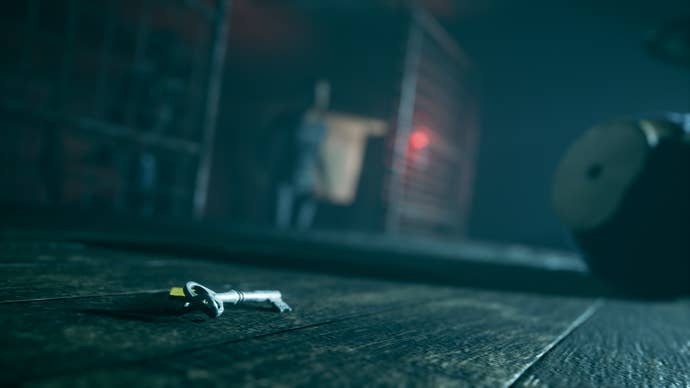
The Anthology games all take inspiration from the real world, be it a myth or historical fact. There’s so much subject matter out there to sift through, so what made you and the team conclude that H. H. Holmes and The World’s Fair Hotel were to inspire the next game?
We’ve been thinking about this for a long time, and right from the start of TDPA, we’ve had the games planned out in some way. We’ve shifted those concepts around, so it’s not locked down, but the idea of doing The Devil in Me has been around for a long time.
With each new game, we try and take you to a new place, a different genre, a new set of people. We need to keep it fresh. We want the next game in the series to be very different from the game that preceded it.
We wanted to do a game about serial killers. It’s a key horror genre, and it’s one that I’m very passionate about. I love serial killer movies, and I love slasher movies. I was very keen to do that, and you’re right, we looked around for real-world inspiration. The thing about H. H. Holmes is he’s interesting on lots of different levels. This guy qualifies as a doctor, heads to Chicago as Chicago is expanding rapidly and is becoming a hotbed for American industrialism. Then, Chicago is hosting this very outward-looking World’s Fair with these pavilions about different countries, and he’s inviting lots of people in there to see it.
Holmes built this hotel to make money off guests, but he’s also a killer. Even before he built the hotel, he was a killer, but he uses the hotel to kill more people. He’s a real-world figure, and we know a lot about him; we know he had a trial and confessed to 27 murders, but also, he’s almost a mythological figure. In that, he self mythologises. Once he realises he’s going to get hanged, he starts bigging up his own legend, he talks about how many he’s killed, he writes an elaborate confession, he does a speech from the stand, and another when he’s about to be hanged. So, he creates a mythology, and the press at the time sensationalise this. They were shown around his hotel, which they called the Murder Castle.
There’s already been The Devil in the White City and other semi-official TV and film adaptations about him, so he’s a character that interests people. Our game uses that as a base, and our killer is inspired by Holmes. They want to be a H. H. Holmes for the modern day, and we’re able to use as much of that myth as we want.
I imagine that there’s always repercussions to consider when creating a game partially inspired by one of the most prolific serial killers of all time. Were there any discussions about the risks of creating a game inspired by Holmes, and what precautions have you taken to be responsible in your depiction?
Yeah, a little bit. We haven’t, for example, used the names of his victims or anything like that. It’s quite a long time in the past, and that helps. I think if it was a more recent serial killer, that can certainly be quite big. It’s about not sensationalising it too much, and making sure we’re not using any names.
In terms of reputation, he’s a confessed serial killer. His reputation is already extremely low, so there aren’t too many concerns about that particularly.
Alongside Holmes, the game has taken inspiration from the SAW series and its gruesome deathtraps, as well as the isolation and claustrophobia of The Shining. Were these mandatory watching for those on the team, and what did everyone think?
I wouldn’t say they were mandatory watching, because the team is quite large. The team that were doing the early-stage concepts and narrative breakdown, we expected them to be familiar with those movies. Most people are - or at least most people who work at Supermassive. Supermassive is a studio that’s specialised in horror games, and people who come work for us usually have an enthusiasm in horror.
It’s certainly not a requirement because we need people with really great technical and artistic skills, but that’s one of the reasons people are attracted to working with us: horror is a genre they really enjoy. It’s also a wider range than those movies; someone in the team might say, “there’s something like this in movie X”, and we’ll have a look at that. We’ve got a library of films we can have a look at, and it’s about zeroing in and finding the right things.
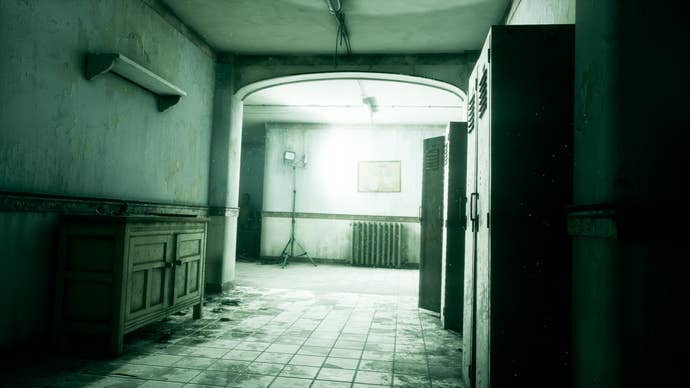
With The Shining in mind, did you take anything specific from Kubrick’s Outlook Hotel?
When you’re playing the game, you’ll see the Easter eggs. The hotel design itself, no. For that, we looked at period North American hotel design. We don’t know what the interior looks like, but we know what the exterior looks like - there are photos of it, so we’ve been able to use those to create something that looks pretty similar.
For the interior, we looked at NA hotels and imagined what it would’ve been like, and tried to make it fit in with the known exterior. It looks really good, and is very convincing. In terms of Kubrick’s The Shining, it’s the mood that we really got. The way the camera moves; the low camera on the corridor, the wide-angle lenses that Kubrick liked, and even some contra zoom stuff - it’s threatening.
How that hotel feels, the way you expect it to be full of people, but it’s abandoned. That sense of space when Jack is sitting alone typing in the ballroom. We’ve tried to nail some aspects of that, but we think there are some more obvious nods that people will enjoy.
You noted various improvements to gameplay are coming to The Devil in Me. What informed you to make these changes, and why did you make them?
We’ve released games every year, and the idea is - always - that we add improvements. Because we’re releasing a new one every year, we can make fairly rapid improvements. We’ve built an audience around TDPA quite successfully, and we’re growing that all the time. That’s great, and we listen to what the community has to say.
We will also read reviews meticulously. We’ll do a spreadsheet of what all the reviews say, and you don’t tend to get a consensus, but you see trends. We’ve also got our own internal discussion: what should we do, and what can we make better? People have strong opinions about that.
It’s looking at all those three things and working out what’s best for the series, but also what works best for this particular game and the story we’re trying to tell. For example, in The Devil in Me, one of Holmes’ techniques is to confuse and disorient victims. This, with influences from SAW, made puzzles seem like a good fit.
We were keen to really enhance exploration. Our environment team build these fantastic levels with a great deal of dedication and art, and we wanted the player to have more opportunity to explore those, and in a bit more of a non-linear fashion. We wanted them to use elements of puzzles to work out how to access secret areas.
We can challenge the player, and we’re giving the player agency. In terms of horror, you create a special type of anxiety and fear by giving players more agency. They know that these characters can die, and with greater responsibility, there’s more tension.
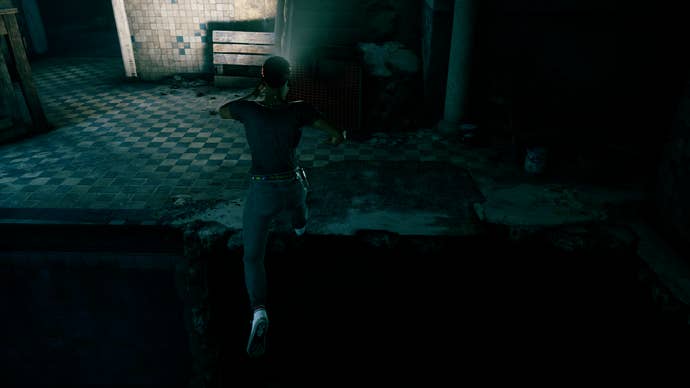
The Devil in Me marks the end of the first portion of The Dark Pictures Anthology. We’ve clearly got more to look forward to, but over the past three years or so, what achievement are you most proud of?
Building the whole franchise. It was created from nothing. We had an idea that we really wanted to double down on horror and explore all of these different genres. The Anthology was a risk, because conventionally people release longer games with bigger development cycles. We said we’re going to keep it shorter, and make it two-player. We’re going to create something that is very social, and we’re going to keep doing it on a regular basis.
That was difficult to explain at first. It really took until we had the third game in the series where people fully understood what we were trying to do. The Devil in Me has the luxury of coming last. The games before it have done the groundwork of introducing what we’re trying to do. They’ve set the scene, and we’ve built this audience; I’m so proud that we’ve done that, and of the audience too.
People who like our games really like them, they’re very enthusiastic about this mix of narrative, relationships, horror, and choice. They love the characters, they love to imagine them in different situations, and they love to root through and find all the obscure branches. That’s just fantastic, and we’ve really enjoyed following that, watching them stream, and discuss it.
We are bringing some really exciting new features to The Devil in Me, and it’s the biggest change in features we’ve ever done. We’re expanding the exploration, adding this inventory, adding puzzles, and increasing the game length, but it’s still very much a Dark Pictures game. We’re not breaking the formula, it’s still going to feature intense choices, consequences, and gruesome deaths.
The Curator is an illusive, recurring character in The Dark Pictures Anthology. In The Devil in Me, you said he might have some tricks up his sleeve… can you tell us any more about that, or perhaps give us a cryptic message of your own about what to expect?
The Curator has his own arc, but it’s not an arc that’ll be completed in The Devil in Me. It’ll get moved on. I will give you a little cryptic hint, though.
The Curator is all alone in his repository, surrounded by all these books and stories. He feels very important. He’s well-dressed and well-groomed. It’s a lovely office he’s got, but as you’ve seen in earlier instalments, he is bound by rules - he talks about that occasionally - of what he can and can’t or should and shouldn't do.
I think the Curator is getting frustrated with that. One of his real frustrations is that although he looks powerful, he lacks power; the player has the power and makes the choices, but the Curator can only observe that. That is frustrating for him, so watch out for that.
The Dark Pictures Anthology: The Devil in Me releases on November 18, 2022, PC via Steam, PlayStation 4, PlayStation 5, Xbox One, and Xbox Series X/S.
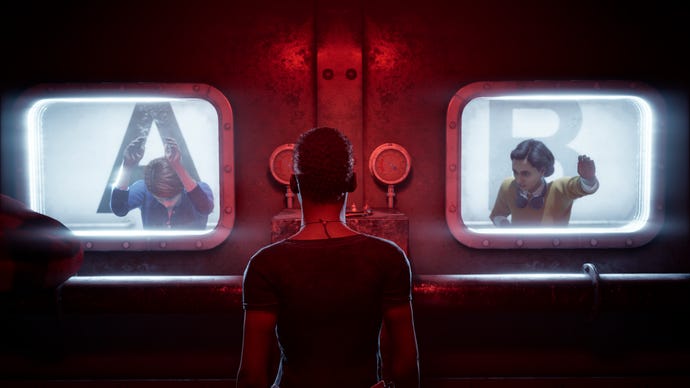

.jpg?width=291&height=164&fit=crop&quality=80&format=jpg&auto=webp)

